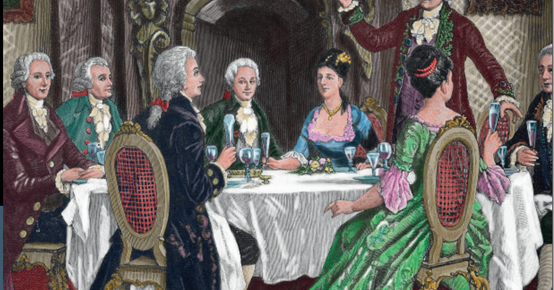
“What is there new to say about nineteenth-century Haydn and Mozart reception?” a musically-inclined friend asked me, with a glint in his eye, when I mentioned my book a few years ago. I started my project with two hunches: that near-universal assumptions about Haydn’s nineteenth-century reputational “fall” are based on an overly narrow consideration of reception-related evidence and, consequently, are deeply misleading; and that perspectives on Mozart’s immense popularity in the same period are skewed by fixations with hefty scholarship and with sweeping narratives about his “classic” and “romantic” status. Tackling both involved evaluating a much broader range of reception sources than scholars have managed hitherto, and simultaneously invited a joint study of the two composers.
Popularly-orientated biographies and articles about Haydn and Mozart’s life and works, as well as fiction, perform the vital function of promoting the artists’ connections to the virtues, values and predilections of the times in which these writings were published, and hence Haydn and Mozart’s relevance to new eras. In the third quarter or so of the nineteenth century, for example, previously neglected fictional stories foreground Haydn as a romantic hero prepared to sacrifice career and even life itself for his principles; as a totally committed artist conquering difficulties partially through musical engagement; and as an articulate, impassioned proponent of modern, independent anti-institutionalized religion fighting an ultimately losing battle for the right to love and share a life with the woman of his choosing. And across the long nineteenth century as a whole, popular but rarely mentioned fictional and semi-fictional tales of Mozart’s life, regularly parsed through his supposed complete absorption in musical activities, set the stage for the momentous nineteenth-century scholarly contributions beloved of modern-day Mozartians. In the final decades of the century, Mozart is depicted in fiction inter alia as a loyal, and generous nature-lover willing and able to befriend ordinary music admirers; as a still more precocious child than generally portrayed, basically shaping his own destiny from the very beginning; and as a man so absorbed in and connected to music that he is able to use it to remedy an unwelcome obsession (with his sister-in-law Aloysia Lange) and other personality defects.
As today, anniversary celebrations for Haydn and Mozart tell us a lot about reception-related perspectives and orientations. The centenary of Mozart’s death in 1891, just as lavishly commemorated as earlier anniversaries in 1841-42 and 1856, conveys a spirit of consolidation rather than advance in respect of understandings of the man and his music; scholars and other musicians (including concert organizers) are collectively witnessed coming to terms with the great advances of the preceding decades, including Otto Jahn’s biography, Ludwig von Koechel’s thematic catalogue, and the first complete edition of Mozart’s works, rather than actively moving discourse and interpretation forwards. At the sesquicentenary of Mozart’s birth (1906), though, the mood was more adventurous, contributing to a boost in high-level scholarly activity in the run-up to 1914. For Haydn, the dynamic is different. While celebrated at 1832 and 1859 anniversaries, he benefits from a steady increase in scholarship, criticism and fiction in later decades – much of it unnoticed or disregarded hitherto – climaxing in a remarkable range of musical activities and events at the centennial of his death in 1909.
As my project progressed, I thought often of the influential critic Donald Tovey’s metaphorical ruminations about music-historical work (1902): “To a man on the top of a hill the details of his wide view do not appear on the same scale as when he walks through them on the plain; but the facts of the plain are not left out in the view from the hill. Nor is the wide prospect more true per se than what is seen within the narrow horizon of the plain. It may be so to an ordnance surveyor; but a botanist might prefer the plain.” Tovey counsels us, in effect, to navigate broad views and intricate details across a range of terrain. In responding to this imperative, I show Haydn and Mozart speaking to the long nineteenth century in more nuanced, powerful, and persuasive voices than previously recognized.
Simon P. Keefe’s book Haydn and Mozart in the Long Nineteenth Century: Parallel and Intersecting Patterns of Reception is published by Cambridge University Press in February 2023
Latest Comments
Have your say!